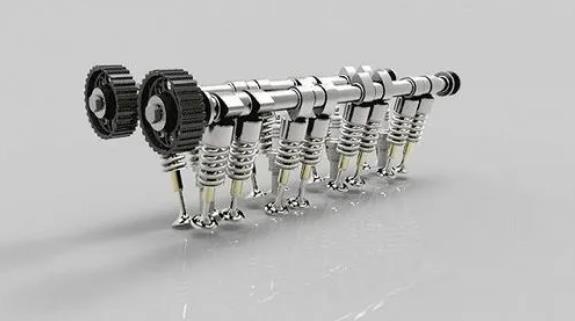Today's automobile engines generally use overhead camshafts, which are divided into single overhead camshafts and double overhead camshafts according to the number of overhead camshafts. So what is the working principle of the engine camshaft?
The working principle of the engine camshaft is: the continuous rotation of the camshaft of the car pushes the valve ram to move up and down, thereby controlling the opening and closing of the valve; by changing the curve of the camshaft, the opening and closing time of the valve can be precisely adjusted.

In addition, camshaft drives come in three forms: toothed belt, chain and gear:
Toothed belt transmission: Neoprene toothed belt transmission is widely used in high-speed engines, replacing chain transmission, significantly reducing noise, light weight, large wrap angle, and reliable operation.
Chain drive: The chain drive has low noise and is generally used in mid-mounted or overhead camshaft engines. The crankshaft drives the camshaft via a chain with a tensioning mechanism and chain guides on the side of the chain. The tension of the chain can be adjusted by the tensioning mechanism.
Gearing: A pair of timing gears is usually used to drive a gasoline engine with the camshaft down. In order to make the gears mesh smoothly and reduce noise and wear, timing gears are usually made of different materials with helical teeth. To ensure valve timing during assembly, there are timing marks on the gears, and these marks must line up during assembly.
